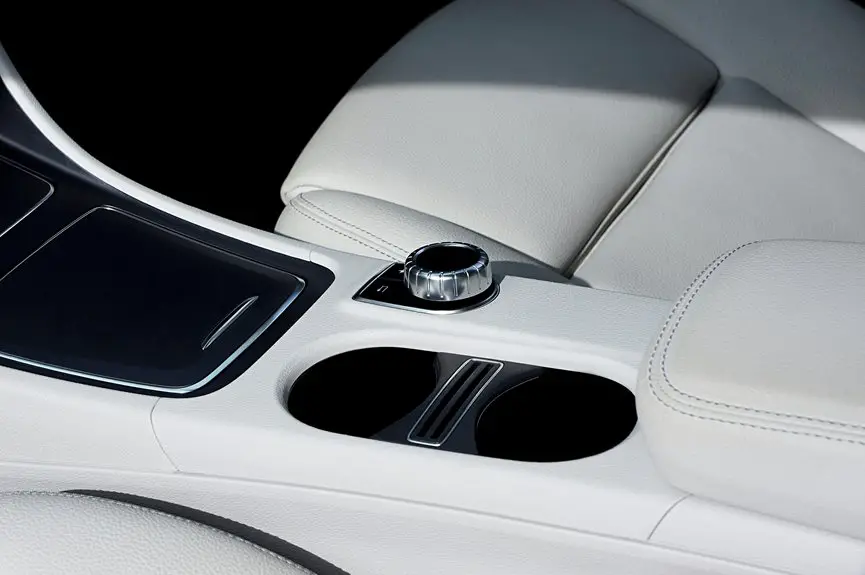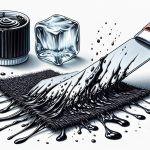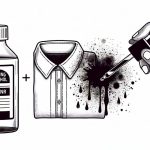To safely remove tar from your car upholstery, first identify whether your seats are fabric, leather, or vinyl. Start by gently scraping off excess tar with a plastic card, then apply rubbing alcohol or a tar remover on a cloth and dab the stain carefully. Use a soft brush with mild soapy water to loosen residue, then wipe clean with a damp cloth. Test solutions on hidden spots to avoid damage. Keep following these steps to confidently protect and refresh your upholstery.
Table of Contents
Key Takeaways
- Identify your upholstery type (fabric, leather, or vinyl) to choose a safe cleaning method and product.
- Test any cleaning solution on a hidden spot to check for discoloration or damage before full application.
- Gently scrape excess tar with a plastic card or dull knife to avoid fabric damage.
- Dab tar stains with rubbing alcohol or a specialized tar remover, then gently brush to loosen residue.
- Wipe with a damp cloth and allow the upholstery to air dry completely to prevent mold or staining.
Identifying the Type of Upholstery
Before you tackle tar removal, you need to identify the type of upholstery in your car. Different materials react differently to cleaning products, so knowing what you’re dealing with helps prevent damage.
Check if your seats are fabric, leather, vinyl, or a combination. Fabric upholstery usually feels soft and porous, while leather has a smooth, slightly glossy finish. Vinyl often feels plastic-like and is less breathable.
Look for any tags or manufacturer labels that specify the material type or cleaning codes. If you’re unsure, test a small, hidden area first with water to see how it reacts.
Identifying your upholstery accurately guarantees you choose the safest, most effective method for removing tar without ruining your car’s interior.
Gathering Necessary Cleaning Supplies
To effectively remove tar from your car upholstery, gather a few essential cleaning supplies that match your seat material.
For fabric seats, you’ll need a gentle upholstery cleaner, a soft-bristled brush, microfiber cloths, and some warm water. If your seats are leather or vinyl, select a cleaner specifically designed for those materials to avoid damage.
You should also have rubber gloves to protect your hands and a plastic scraper or an old credit card to lift the tar carefully. Avoid harsh chemicals like acetone, which can ruin upholstery.
Having a small bowl to mix cleaning solutions and a spray bottle for even application will help, too. Preparing these supplies beforehand guarantees you can tackle the tar spot efficiently without risking damage to your car’s interior.
Prepping the Area for Cleaning
Once you have all your cleaning supplies ready, focus on preparing the area around the tar stain.
Start by parking your car in a well-ventilated space or open garage to avoid inhaling fumes from cleaning products.
Next, remove any loose dirt or debris from the upholstery using a soft brush or vacuum cleaner. This prevents dirt from embedding deeper during cleaning.
Lay down old towels or plastic sheets around the stain to protect your car’s interior from spills or drips.
If possible, open car doors or windows to improve airflow.
Finally, test your chosen cleaning solution on a hidden upholstery spot to verify it won’t cause discoloration or damage.
Once these steps are done, you’re set to proceed safely.
Applying Safe Tar Removal Techniques
You’ll find three effective methods to safely remove tar from your car upholstery without causing damage.
First, gently scrape off excess tar with a dull knife or plastic card, being careful not to press too hard.
Next, apply a small amount of rubbing alcohol or a specialized tar remover to a clean cloth and dab the stain—don’t rub, as this can spread it. Let it sit for a few minutes to break down the tar.
Apply rubbing alcohol or tar remover gently by dabbing to avoid spreading the stain.
Alternatively, you can use warm, soapy water with a mild detergent on a soft brush to loosen the residue.
Always test your chosen method on a hidden spot first to verify it won’t harm the fabric.
Patience and gentle techniques are key to preserving your upholstery’s condition.
Cleaning Residue and Preventing Stains
Once you’ve removed the tar, focus on cleaning any leftover residue to keep your upholstery spotless.
Use gentle, effective techniques to avoid damaging the fabric while lifting stubborn stains.
To prevent future marks, apply protective measures that make your upholstery easier to maintain.
Effective Cleaning Techniques
Although tar can be stubborn, tackling it quickly helps prevent deep stains and residue buildup on your car upholstery.
Start by gently scraping off excess tar with a dull knife or credit card, being careful not to damage the fabric. Next, apply a specialized tar remover or an appropriate solvent like rubbing alcohol to a clean cloth, and blot the stained area without rubbing harshly.
Use a soft-bristled brush to work the cleaner into the fibers gently, loosening the tar. Afterward, wipe the area with a damp cloth to remove any remaining product and residue.
Finally, allow the upholstery to air dry completely. These steps help you effectively clean tar without spreading it further or causing permanent damage.
Stain Prevention Tips
To keep tar stains from becoming a recurring problem, it’s important to act promptly and follow proper cleaning methods that prevent residue buildup.
After removing tar, always clean the area with a mild upholstery cleaner to eliminate leftover oils or particles that attract dirt. Avoid rubbing harshly, which can push residue deeper into the fabric. Use a soft cloth and blot gently instead.
Consider applying a fabric protector designed for car upholstery to create a barrier against future stains. Regularly vacuum your seats to remove dust and debris that might mix with any sticky residue.
Finally, try to avoid parking near construction sites or freshly paved roads where tar exposure is likely. Staying proactive helps maintain your upholstery’s appearance and prevents stubborn stains.
Tips for Maintaining Upholstery After Tar Removal
Keeping your car upholstery in great shape after removing tar requires regular care and attention. After cleaning, make sure to let the fabric dry completely to prevent mold or mildew.
Vacuum your seats regularly to remove dirt and debris that can wear down fibers over time. Use a fabric protector spray designed for automotive upholstery to repel future stains and make cleaning easier.
When you spot spills, address them quickly to avoid permanent marks. Avoid harsh chemicals that can damage the fabric; instead, opt for gentle, upholstery-safe cleaners.
Finally, park your car in shaded areas when possible to reduce sun damage and fading. Following these simple steps helps keep your upholstery looking fresh and extends its lifespan after tar removal.
Frequently Asked Questions
Can Tar Damage Car Upholstery Permanently?
Yes, tar can damage your car upholstery permanently if left untreated. It can stain and seep into the fabric fibers, making it hard to remove. Acting quickly reduces the risk of lasting damage.
Is Professional Cleaning More Effective Than DIY Methods?
Imagine a skilled artist restoring a masterpiece—professional cleaning often works better than DIY methods. You’ll get expert tools and knowledge, making your upholstery shine without damage, unlike risky home attempts that might leave stains behind.
Are There Eco-Friendly Tar Removal Products?
Yes, you can find eco-friendly tar removal products made from natural ingredients. They’re less harsh on your upholstery and the environment. Always check labels for biodegradable formulas and test on a small spot before full use.
How Long Does Tar Take to Harden on Upholstery?
Tar usually takes about 10 to 30 minutes to harden on upholstery, depending on temperature and thickness. You’ll want to act quickly before it sets to make removal much easier and avoid damage.
Can Tar Removal Affect Upholstery Warranty?
Like walking a tightrope, removing tar can jeopardize your upholstery warranty if you use harsh chemicals or tools. You should check your warranty terms first and opt for gentle, approved cleaning methods to stay safe.
- The Use of Nonwovens in Construction and Civil Engineering - July 11, 2025
- The Use of Nonwovens in Construction and Civil Engineering - July 11, 2025
- The Use of Nonwovens in Construction and Civil Engineering - July 11, 2025





